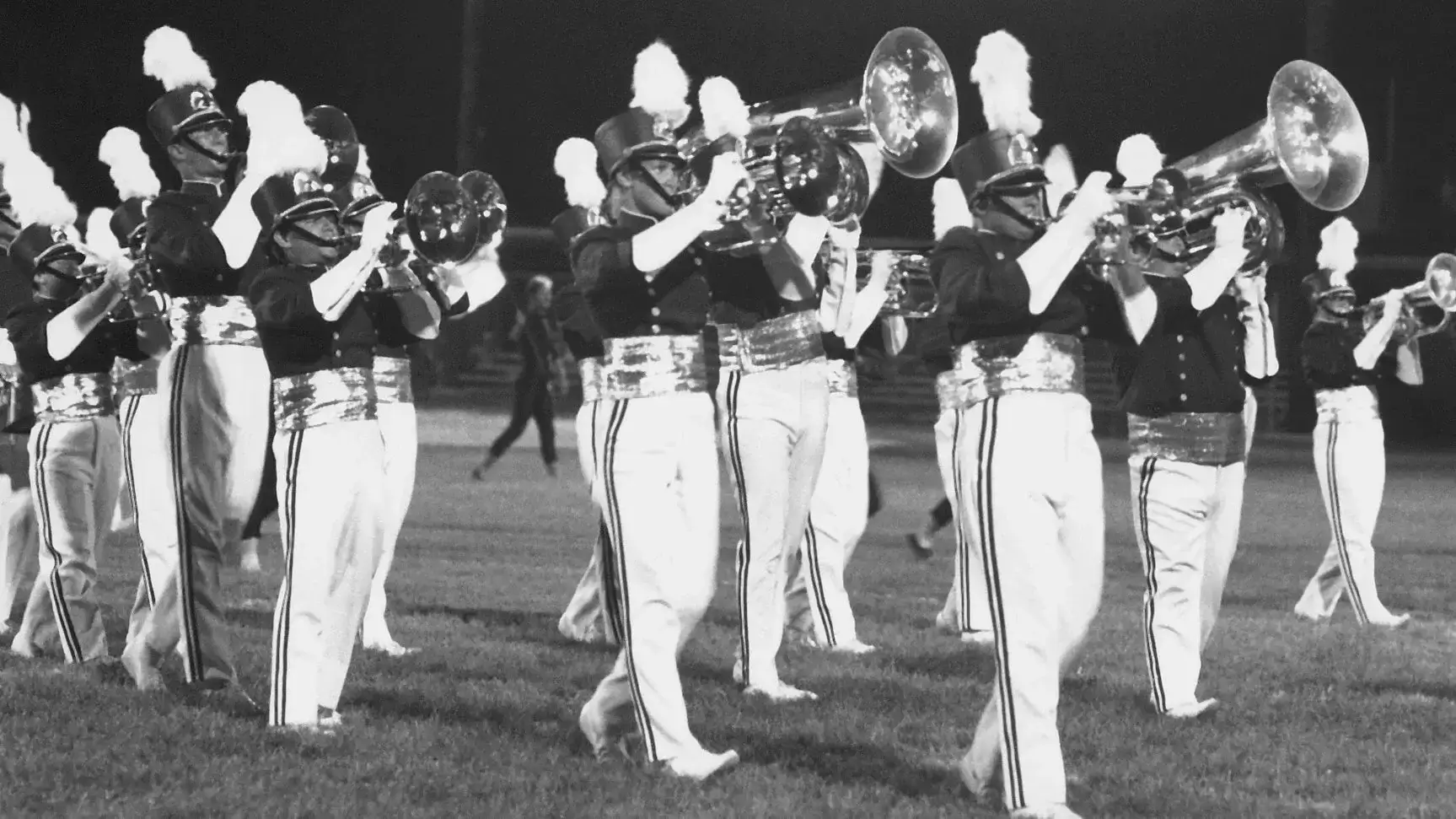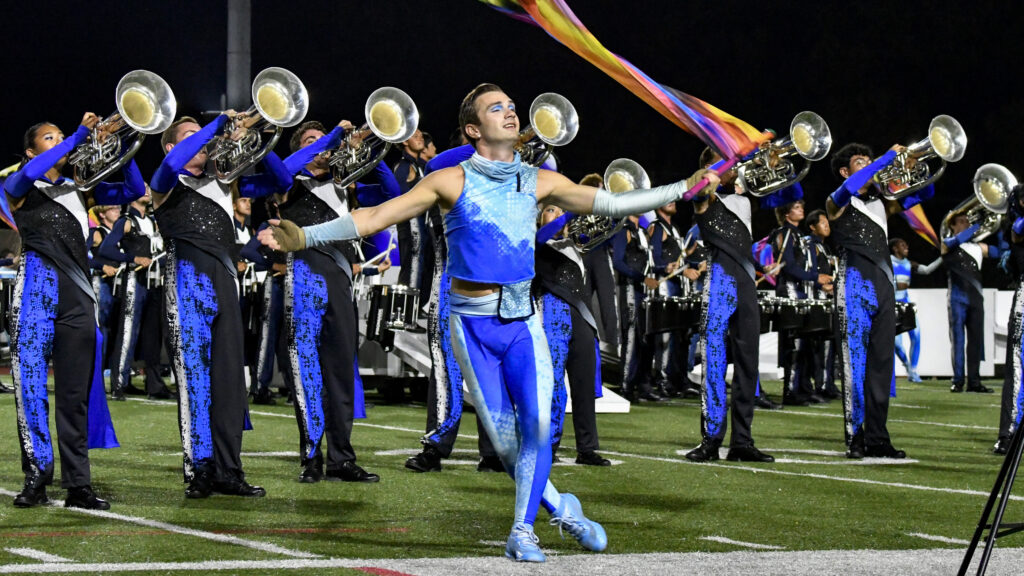In 1989, the Drum Corps International World Championships returned for the second consecutive year to Arrowhead Stadium, located a few miles east of Kansas City.
Also returning for a second year was Santa Clara Vanguard’s “Phantom of the Opera” show, which earned the corps its fifth DCI World Championship title with a then-record score of 98.40. The win broke a chain of second-place finishes that lasted four years in a row.
Another “Phantom,” this one the Regiment, placed second just four tenths of a point behind, tying the previous record score. Yet another record score was set when Star of Indiana broke into the top-six corps in the Finals competition with a score of 95.30, a record that still stands for sixth-place corps.
Something else returned in 1989 … Suncoast Sound’s “Florida Suite,” the all-original music production first performed by the corps in 1985. The ninth-place production was less a retread than a fresh look at the popular show from four years earlier. The earlier incarnation is perhaps best known as the first entirely new all-original score ever composed for and performed by a DCI World Class corps.

Corps arranger, Robert W. Smith, who would go on to be inducted into the DCI Hall of Fame in 2010, talked about what it was like to introduce an all-original show four years earlier: “We were clearly situated in Florida and had built a very good horn line. About half the 1984 Vietnam show was original music, but we never advertised that. In 1985, we took the approach to be lighter and easier on the emotional palette. We did drastically different things than before, but still kept a sound that when you heard the brass line, you knew it was Suncoast.
“What prompted us to do the show with original music was our inability to find the right material to work with the theme. It wasn’t easy to find tunes about Florida and being in the Sunshine State. In researching possible music, nothing was jumping out at us. We realized we could be more focused and more efficient if we wrote original material. The inspiration was clearly the place where we lived, and then we tried to find the things to which people would relate. For lack of a better term, I’ll call the show ‘postcards or images of the Sunshine State.’ The show was inspired by Ferde Grofé’s ‘Grand Canyon Suite.’”
Unlike 1985, the 1989 production was all about the music. This year’s show did without many of the happy-go-lucky Florida-like elements from four years earlier, such as the giant binoculars held by members of the color guard portraying tourists.

Some of the selections were also presented in a different order. As in 1985, the show opened with “Overture,” which set the mood for the individual “postcards or images of the Sunshine State.” Smith reworked the piece and gave it a slightly more polished sheen, a little bit more symphonic and a tad less brash than in the earlier production.
The horn line started in a straight line down the left 35-yard line, and all but a couple members of the color guard “awoke” from lying on the ground. The guard, following up on the more symphonically classical approach of the horn line, was attired in simple black bodysuits.
Next came “Native Rites,” new for 1989 and largely featuring percussion and extremely long striped flags in the color guard, as well as the full corps vocalizing a sort of ethnic-sounding chant.
The third tune, “Simple Song at Sunrise,” was originally the second selection in 1985, representing the purity of being on the beach and looking at the scenery. “I literally sat on a beach and wrote the melody in a sunrise setting,” Smith said.
As such, the tune was lovingly evocative of scenes on the beach, such as large gull props that sailed across the field as if looking for scraps from the tourists upon which to feed.

At the beginning of the closer of “Midnight in Miami,” Smith worked in a brief but unmistakeable musical quote paying homage to “Melancholy Serenade,” the theme of “The Jackie Gleason Show.” Gleason’s show ran from 1952 to 1970 in a number of incarnations, many which originated from Miami Beach.
The music celebrated the Cuban influences of the music of south Florida, with long vertically striped purple-hued flags embracing the field like giant Cuban scarves.
Unfortunately, 1989 would be the last year for Suncoast Sound in its original incarnation. After 11 years, the corps went inactive for the next two years, returning in 1992 for three years of competition in Drum Corps International’s Open Class division (then called Division II & III) before disbanding for good.

Michael Boo was a member of the Cavaliers from 1975-1977. He wrote about the drum corps activity for more than 35 years while serving as a staff writer for various Drum Corps International projects. During his lifetime Boo wrote for numerous other publications including an honors-winning book on the history of figure skating. He also was an accomplished composer. Boo passed away in 2020 and was inducted into the DCI Hall of Fame posthumously in 2021.





